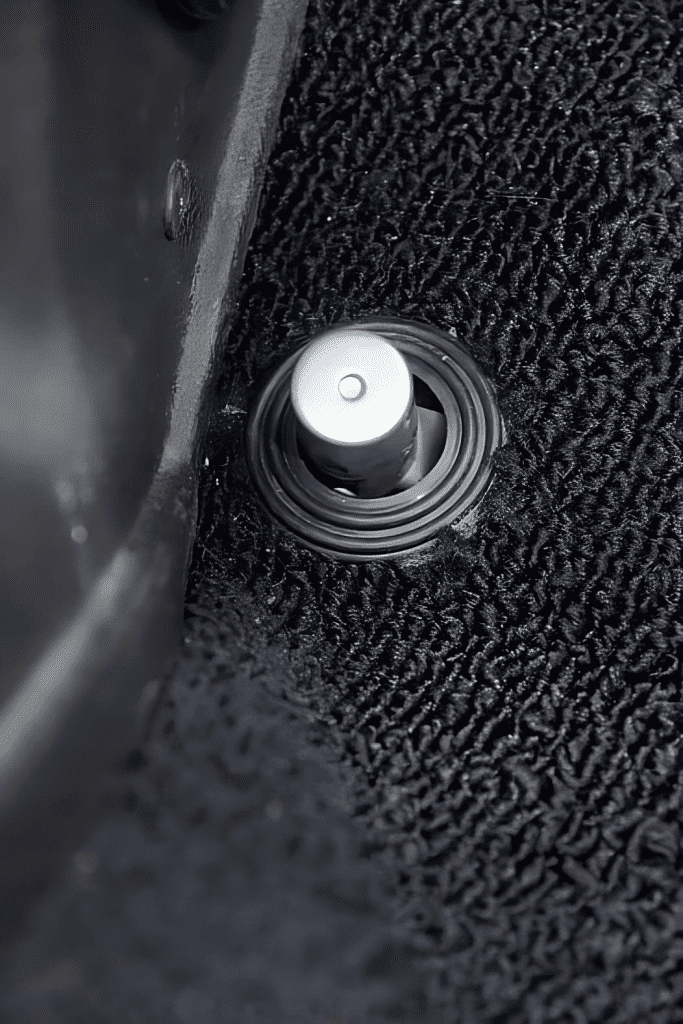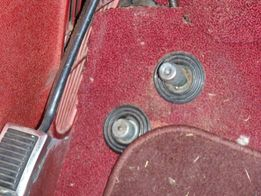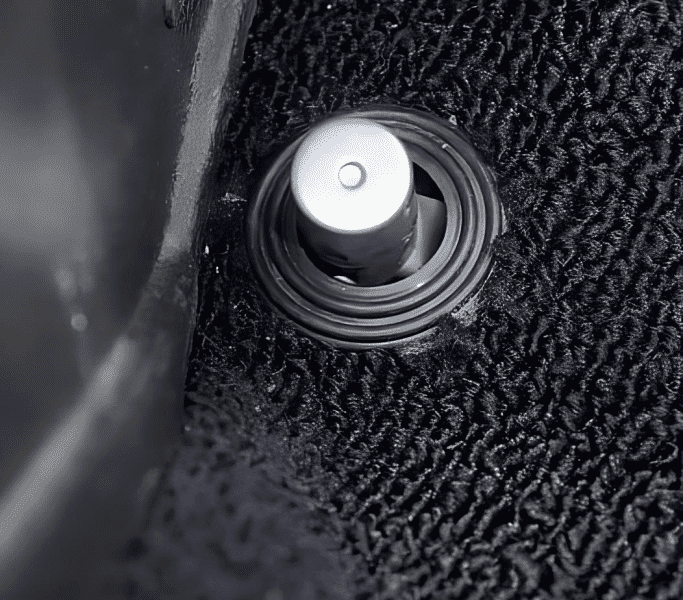In an age where car technology grows ever more complex, today’s drivers might be surprised to learn about a simple feature that was once a common sight—the high beam headlight dimmer switch on the floor. This curious floor button, widely used throughout the mid-20th century, was the original dimmer switch, giving drivers an easy way to toggle between low and high beams. Exploring its history reveals much about shifting automotive trends and the pursuit of driver convenience over the years.
The Invention of the High Beam Headlight Dimmer Switch

The story of the high beam headlight dimmer switch begins in 1925, when Guide Lamp Co. introduced a groundbreaking innovation—the two-filament headlight bulb. This invention allowed drivers to switch between low and high beams, adding much-needed visibility on poorly lit roads. Initially, the dimmer switch was mounted on the steering column, allowing drivers to control it with minimal effort. But by 1927, concerns over safety emerged, as drivers had to take a hand off the wheel to activate the switch. The solution? Moving it to the floor, where it would remain for nearly half a century.
The Golden Era of the Floor-Mounted Dimmer Switch
From the late 1920s through the 1970s, the floor-mounted dimmer switch reigned supreme. Positioned to the left of the pedals, this button let drivers toggle between high and low beams with a simple foot press, freeing up their hands for steering. This design offered a hands-free solution that proved particularly helpful for long-distance night driving, where toggling between beams was frequent. For many drivers of this era, the floor-mounted dimmer became a familiar and satisfying feature—a distinctive “click” that marked a time when driving required more manual engagement.
Challenges for Manual Transmission Vehicles
Despite its popularity, the floor-mounted dimmer switch posed certain challenges, particularly for drivers of manual transmission vehicles. Since manual drivers needed their left foot to operate the clutch, it often became tricky to balance the clutch and dimmer switch while shifting gears. This drawback highlighted the limitations of the floor-mounted switch in manual cars and hinted at the need for a redesign that would accommodate all drivers, regardless of transmission type. As foreign imports with steering column-mounted dimmers entered the market, American manufacturers began to take notice.
The Shift Back to Steering Column-Mounted Dimmer Switches
By the 1970s, automotive design started shifting in response to the energy crisis, which prompted demand for smaller, fuel-efficient cars. European models with column-mounted dimmers gained popularity, offering convenience by allowing drivers to operate headlights, turn signals, and even wipers without removing their hands from the wheel. This design was safer and simpler for manual transmission users, as it freed up the left foot from double duty.
Switching to a stalk-mounted dimmer on the steering column, however, required new engineering, which delayed its adoption until cars received full redesigns. Consequently, some American cars, particularly trucks, continued using the floor-mounted dimmer into the early 1990s, sticking to tradition where space and simplicity were still prioritized.
The Rise of the Multi-Function Stalk Switch
With the success of the steering column-mounted dimmer, manufacturers saw an opportunity to consolidate other functions into a single stalk. By combining the dimmer switch, turn signals, and wipers into one compact control, the multi-function stalk provided a more streamlined experience. While the all-in-one design improved convenience, it also introduced a bit of a learning curve, as drivers had to become accustomed to multiple functions within a small space. Despite this initial adjustment, the column-mounted dimmer represented a move toward greater safety and functionality in automotive design.
Safety and Convenience: Why the Floor-Mounted Dimmer Faded Away

The move from a floor-mounted dimmer to a steering column switch reflected a broader emphasis on safety and driver convenience. With the dimmer on the steering column, drivers no longer had to remove their hands from the wheel, which improved reaction times and reduced distractions. This switch also resolved the issue manual transmission drivers faced with balancing clutch and dimmer control, offering a universally accessible solution that worked for everyone. While some vintage car enthusiasts argue that the floor-mounted dimmer was simpler and more reliable, the column-mounted switch became a driver-friendly, standardized choice that prioritized road safety.
Automatic Headlight Dimming: Today’s Answer to High Beam Control
In modern cars, technology has largely replaced the need for manual dimming with automatic headlight systems. Today’s vehicles use sensors to detect oncoming cars and adjust the beams accordingly, reducing glare for other drivers and making night driving safer. With this innovation, the debate over the ideal dimmer switch location has essentially disappeared, but for those with an affinity for vintage cars, the floor-mounted dimmer remains a nostalgic reminder of simpler times.
Conclusion: Remembering the Legacy of the Floor-Mounted Dimmer Switch
The evolution of the high beam dimmer switch—from the steering column to the floor and back again—captures the changing priorities in automotive design, where safety, convenience, and driver preferences all play crucial roles. Though automatic headlights have mostly replaced the need for a manual dimmer, the memory of the floor-mounted button endures as a piece of automotive history. For those who remember using it, the floor-mounted dimmer switch is a cherished symbol of classic car design and a testament to the innovations that have shaped driving as we know it today.




